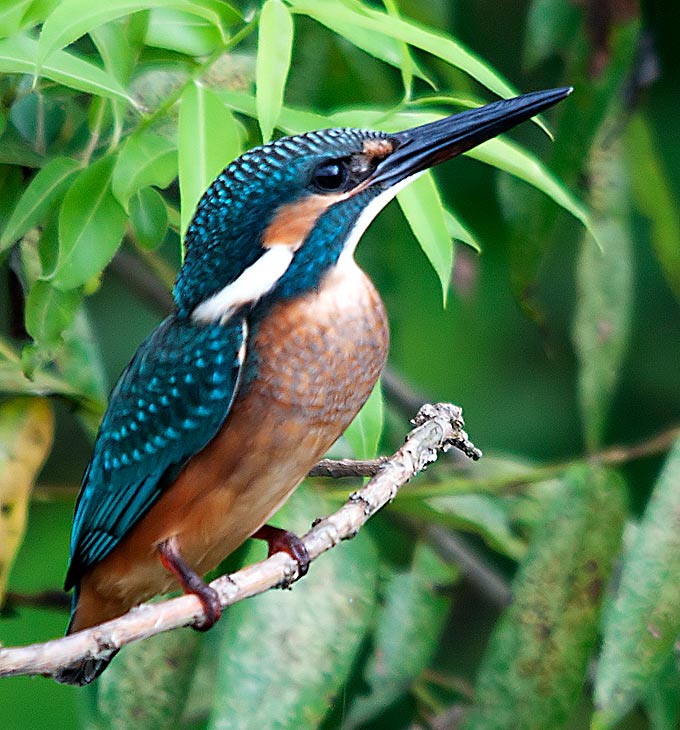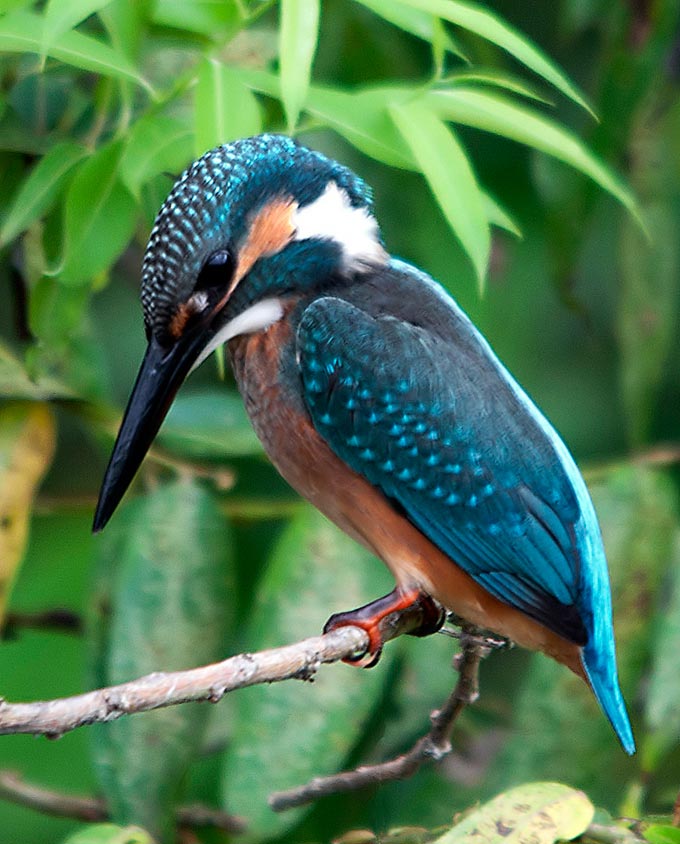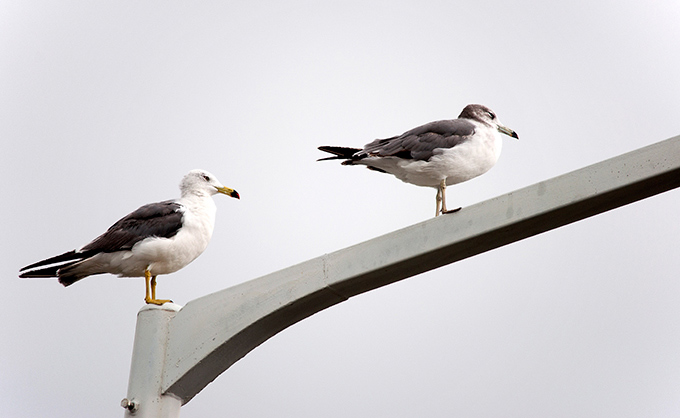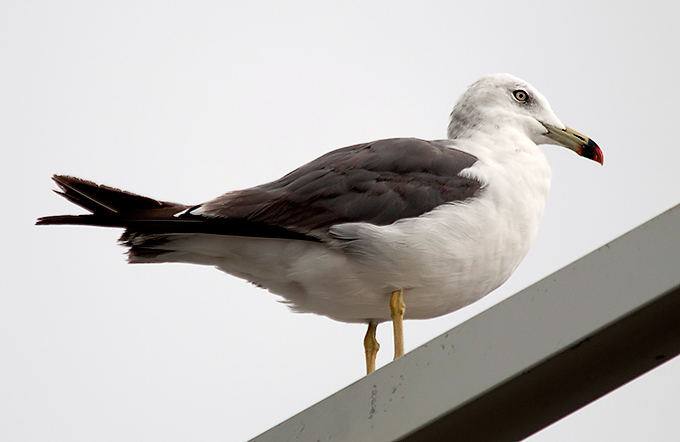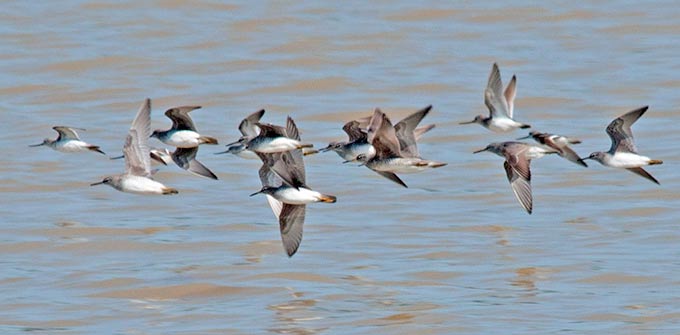 | E-mail to Birds Korea |
 | KWBS |
in the Region
 | The Oriental Bird Club |
 | BirdLife International (Asia) |
August
Typically hot and humid (with day maxima often around 30°C until at least mid-month), with occasional heavy rains and strong winds, associated either with southern typhoons or caused by the mix of humidity and heat.
Chinese Egrets become widespread along the west coast. Shorebirds (including a very small number of Spoon-billed Sandpiper) begin to build up at a few of the remaining best sites. Numbers tend to be rather lower than in spring, though Kentish Plover and Terek Sandpiper often number in the thousands in the southwest.
Parties of Black-naped Orioles, the appearance of returning leaf warblers (especially Eastern-crowned and Arctic Warblers) and small numbers of Brown Shrike and Yellow-rumped and Brown Flycatchers by mid-month also hint at the start of passerine migration, while Eurasian Hobby appear to be on the move by the month’s end. At the very end of August, the first migrant Pechora Pipit (most likely of the subspecies menzbieri) and early migrant buntings also appear on offshore islands. August national rarities include Common Ringed Plover, Sooty Tern, House Swift, Black Tern and Lesser Frigatebird. National firsts since 2000 have included Sooty Shearwater in 2002, and Aleutian Tern and Great Frigatebird in 2004.
(The following records are a compilation of our own sightings and records sent in by other observers. As well as being posted on the Birds Korea website(s), selected records are also forwarded to other Korean-language birding websites; records of threatened species are arranged and forwarded to Birdlife International and national authorities when appropriate; flag images and records are passed to bodies responsible for their coordination throughout the flyway; and all records sent to us are used to compile annual reports and to support the evolving understanding of the status of many of Korea’s birds.)
Mokpo Namhang Urban Wetland, August 28
The daily monitoring revealed a good mix of bird species but also that some infilling into the site ´started again.
On Herons and today 46 Grey Heron, 12 Little Egret, 16 Great Egret and one Striated Heron were recorded. Shorebird species of today were 4 Kentish Plover, 3 Little Ringed Plover, 7 Long-billed Plover, 1 Eastern Oystercatcher, 7 Black-tailed Godwit, 16 Whimbrel, 3 Common Redshank, 2 Marsh Sandpiper, 58 Common Greenshank, 17 Wood Sandpiper, 28 Terek Sandpiper, 18 Common Sandpiper, 8 Grey-tailed Tattler, 11 Ruddy Turnstone, 31 Red-necked Stint, 18 Long-toed Stint, 2 Sharp-tailed Sandpiper, 60 Black-tailed Gull. Of special note are 13 Black-winged Stilt, the highest count of this species for this site. Also a regular visitor in the last days a Common Kingfisher, along with small numbers of Barn Swallow, White Wagtail, Brown-eared Bulbul and Eurasian Magpie. Only Eurasian Treesparrow were with 64 quite numerus.
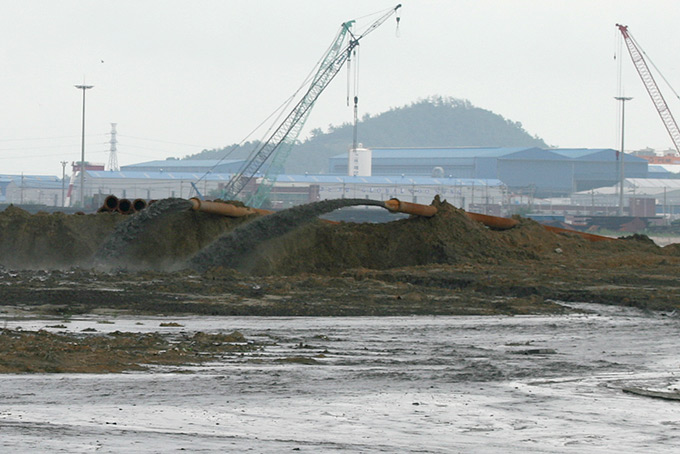
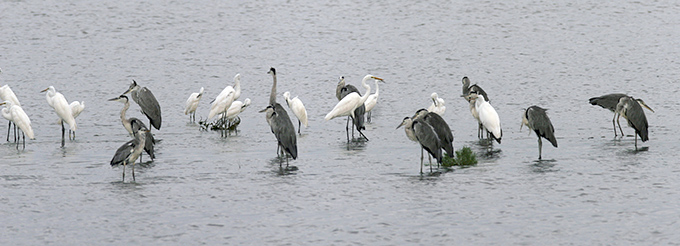
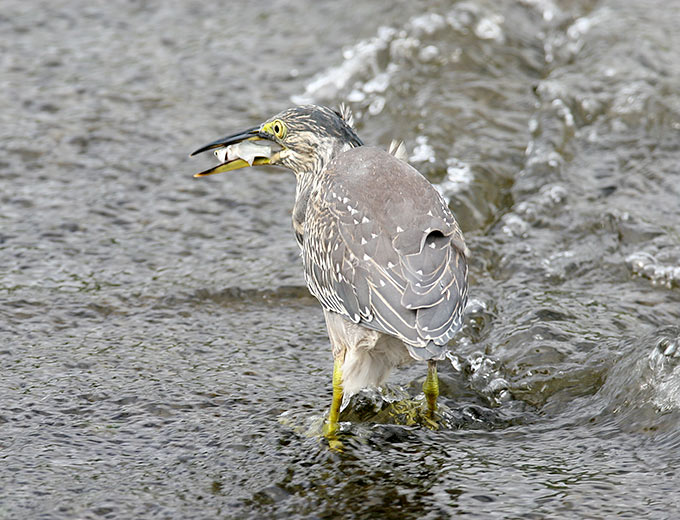
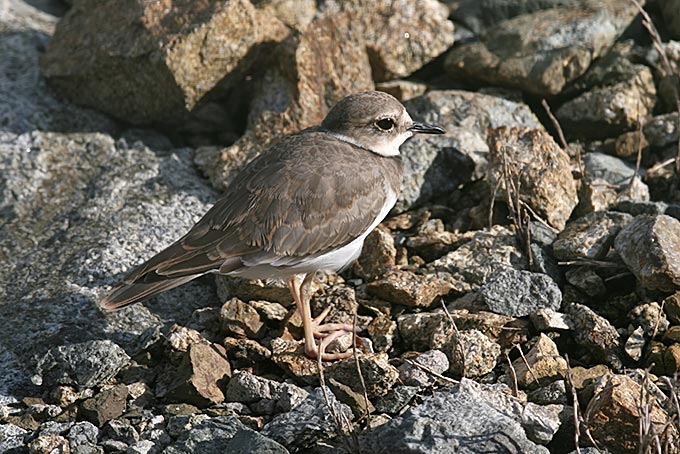
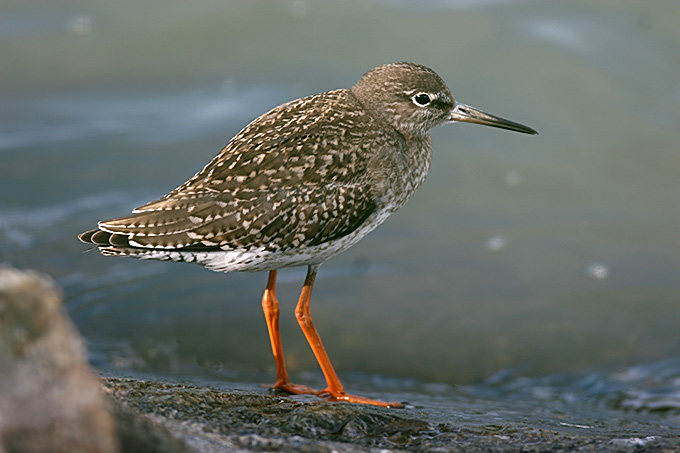
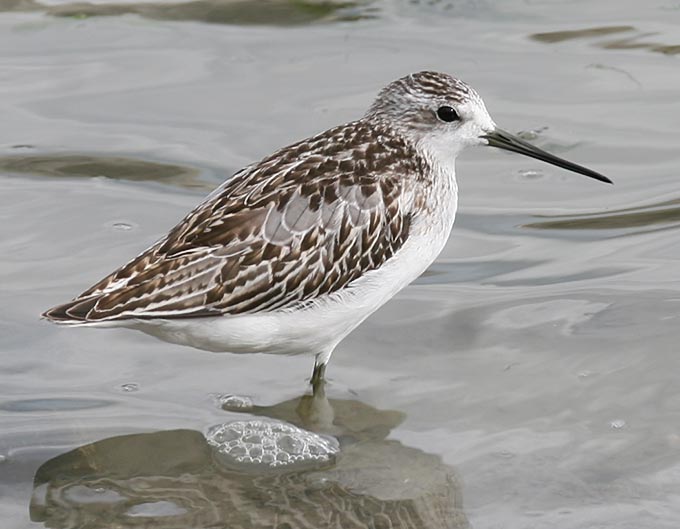
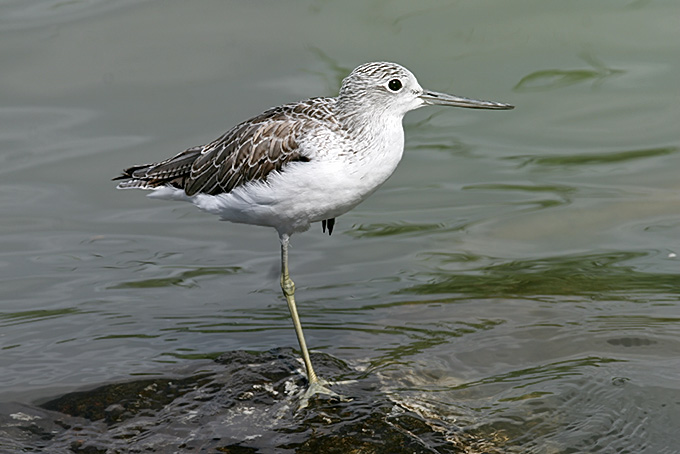
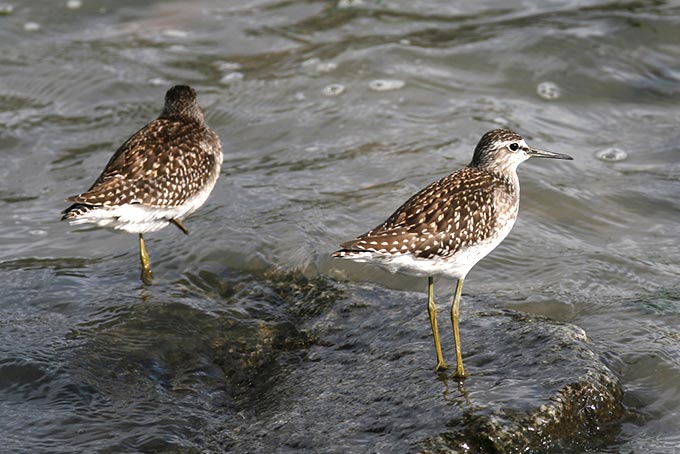
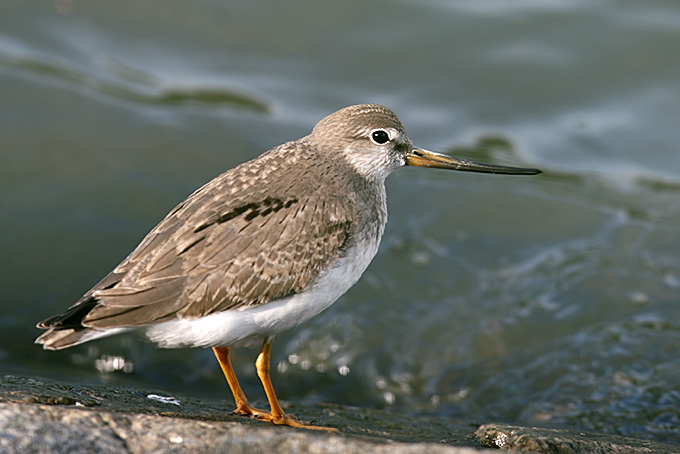
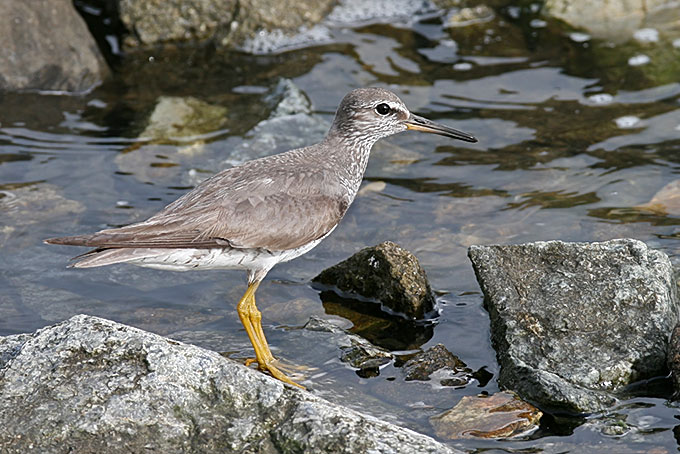
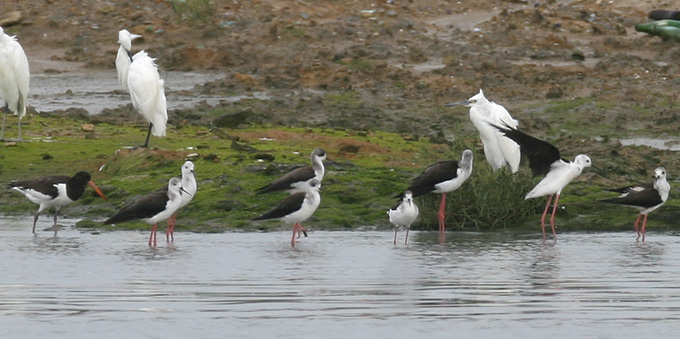
Photo © Dr. Kim Seok-Yee
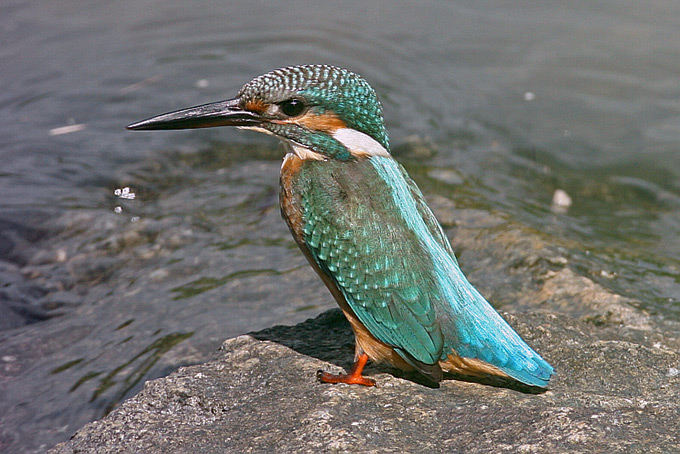
Northeast coast, Jeju island, August 21
A sweltering summer day on Jeju. In a lush mixed forest in from the coast, a pair of Black Paradise Flycatchers was spotted flying through the canopy, but no sign of the Fairy Pittas that were recently seen here. Also in this forest were handfuls of Japanese White-eye, Great Tit, and White-backed Woodpecker. On the coast en route to Hado, numerous Barn Swallows and Black-tailed Gulls, as well as several Common Sandpiper, a half dozen Terek Sandpipers closely associating with a similar number of Grey-tailed Tattlers, a beautifully marked male Ruddy Turnstone in summer plumage, a Pacific Golden Plover, at least two dozen Kentish Plover, and a handful of Red-necked Stint and Sanderling.
At Hado, several Spot-billed Duck, along with about a dozen Temminck's Cormorant. At Seongsan, as well as all along the coast, Grey Heron were plentiful, with at least 40 seen. About 30 Little and Intermediate Egrets were also seen, mixed in with several Great Egrets in one spot. Four Pacific Reef Heron were also spotted along the coast.
On the coast near Hado, several Carrion Crows were feeding at the water's edge. In the bright sunlight, some of them showed a lot of browninsh coloration. In my time on Jeju, I've not come across many Carrion Crows, and the only place I've observed them is a small stretch of northeast coast. Large-billed Crows, on the other hand, are quite numerous and widespread on Jeju, especially at higher elevations.
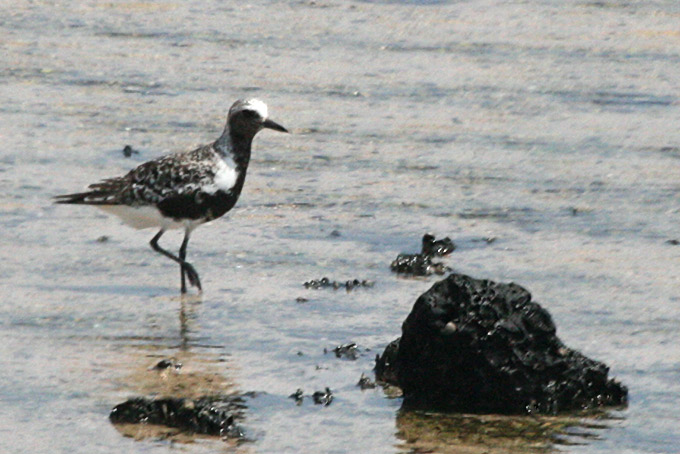
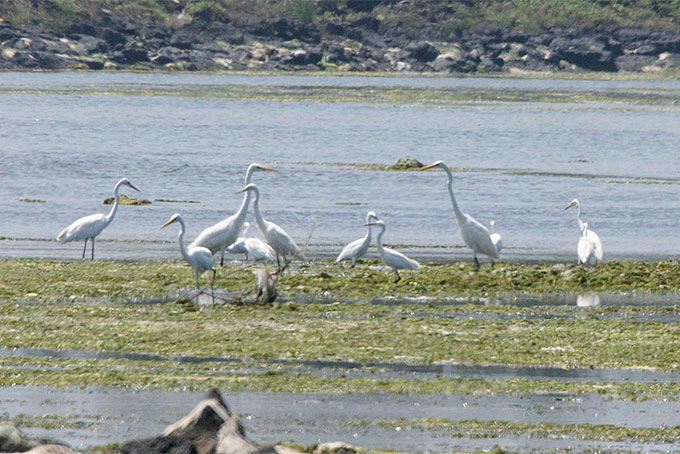
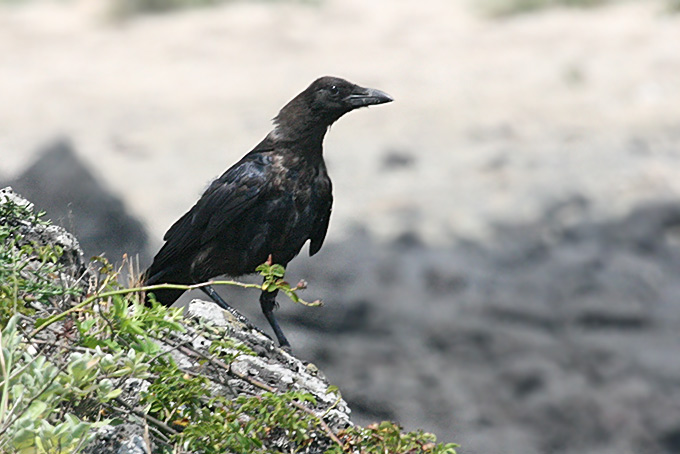
Incheon-Baekryong Island, August 18
On the sea crossing, 141 Streaked Shearwater were shearing the water with their long glides, and 12 Common Tern hurried southward. On a small part the island, 15 Chinese Egret, 120+ Temminck's Cormorant, 1 Pelagic Cormorant, 2 Peregrine Falcons, an Asian Brown Flycatcher, a Blue Rock Thrush, 1 Mongolian Gull, 4 Grey Heron, numerous Black-tailed Gull, 13 White-cheeked Starling, single numbers of Grey-capped Greenfinch, Oriental Turtle Dove, a Jay, Grey Wagtail, Tree Sparrow, White Wagtail and in the evening, a calling Oriental Scops Owl.
Unfortunately the Island's habitats seem rather degraded: there appears to be ongoing reclamation of a section of mudflat, and the streams and irrigation ditches have been concreted.
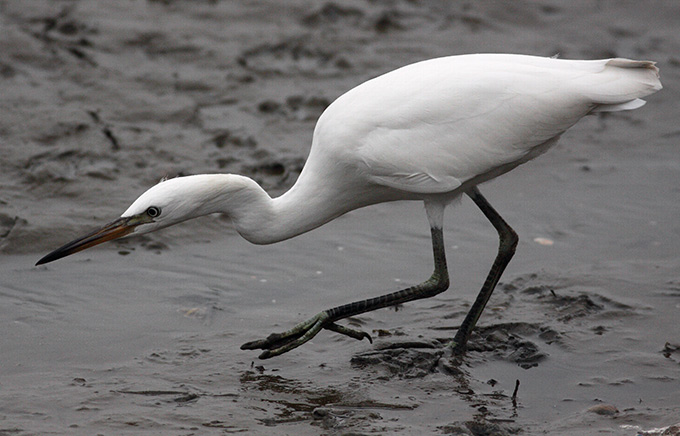
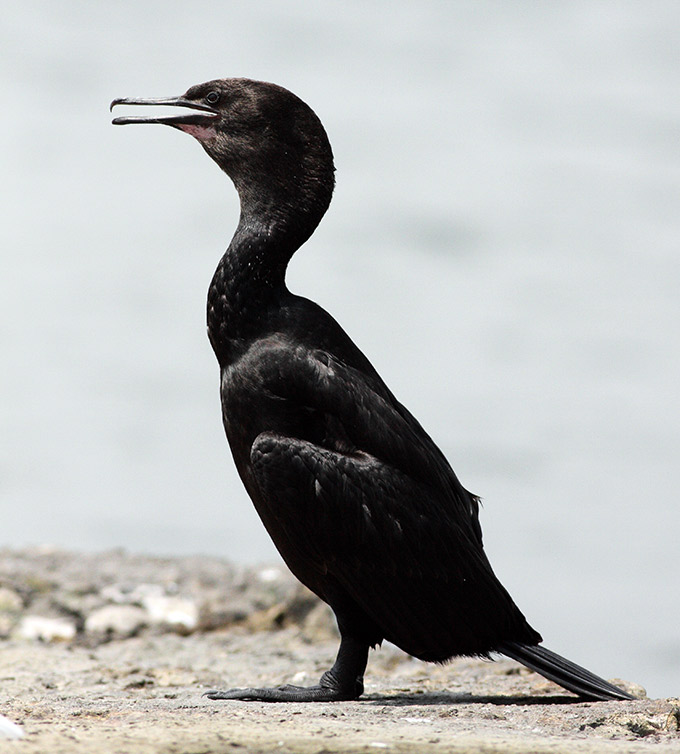

Seogwipo, Jeju island, August 17
It's been a very quiet and muggy summer on Jeju. In a local park, scruffy juvenile Brown-eared Bulbuls, Common Kingfishers, Bull-headed Shrikes, and Grey-capped Greenfinch could all be seen practicing their flying and feeding skills, with varying degrees of success. The juvenile Shrike was particularly clumsy and unafraid of people. Numerous Oriental Turtle Doves (several of them in first winter plumage) and Barn Swallows were also spotted in the park. In the harbor, several Common Sandpipers and Japanese White-eyes noisily scattered when the ominous shadow of a large male Peregrine Falcon floated past.
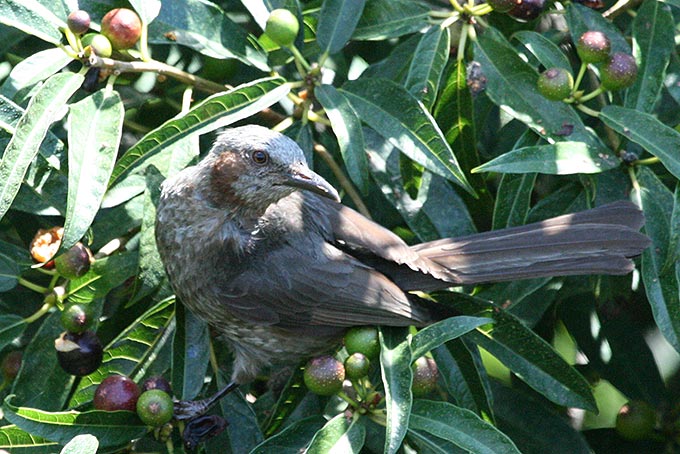
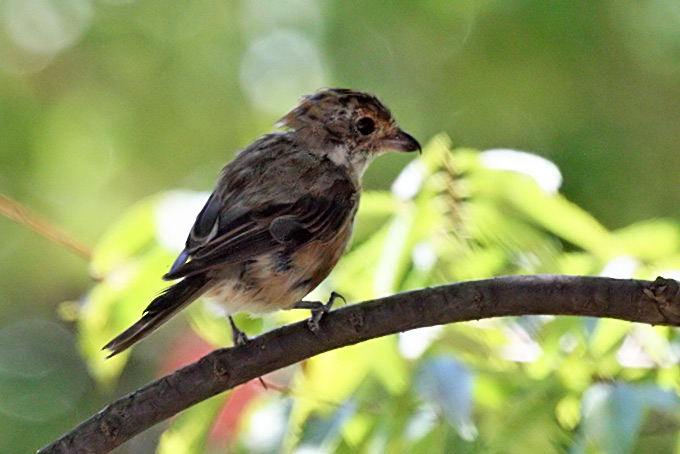
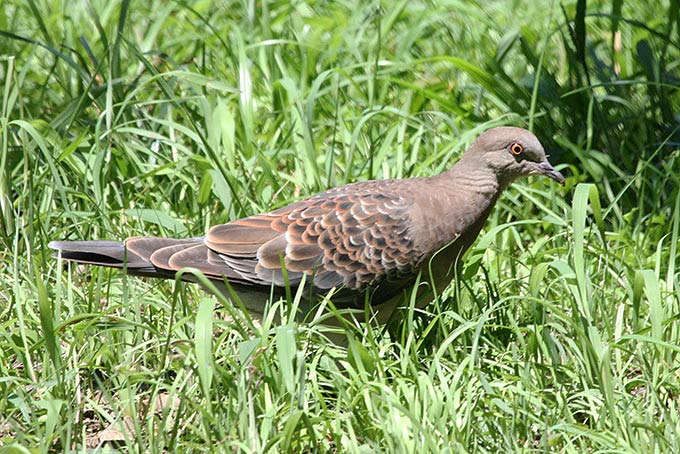
Suncheon Bay, August 15
An overcast, gloomy, and very humid day. Heavy rain fell as I arrived in Suncheon city, but this had fortunately stopped by the time the number 67 bus deposited me next to Suncheon Bay's impressive visitor centre. As usual for this site at the weekend, the car park was packed with cars and tour buses, but - also as usual - almost everyone remained around the centre and on the reedbed boardwalk, and once I was on the path towards the tidal bay I had the place almost to myself.
At first the tide was high and there was no exposed mud, so there were very few waders to be seen. By quickly walking the 3 miles or so to the western end of the bay, I was in position for when the tide started to recede. However the tide goes out very quickly at this site, and before long the birds were rather distant and difficult to observe in the poor light conditions.
However, during my brief window of opportunity, a respectable total of 17 wader species was seen. Most numerous were Eastern Black-tailed Godwits, several hundred of which probed the mud - which I was quite surprised about, as this is not a species I would usually associate with tidal mudflats. Here and there, a scattering (less than 10) of the expected Bar-tailed Godwit, perhaps 30 or 40 Eurasian Curlew and Far Eastern Curlew, about the same number of Whimbrel, 30 or so Common Greenshank, 50 Terek Sandpiper, 8 Great Knot, 1 Red Knot, 2 Common Redshank, 2 Dunlin, 3 Ruddy Turnstone, 6 Mongolian Plover, perhaps half a dozen Pacific Golden Plover, and 2 Grey Plover. On the shores of the newly created (and seemingly unnecessary) lake with its viewing platforms, 2 Common Sandpiper and a juvenile Little Ringed Plover.
Mokpo Namhang Urban Wetland, August 14
The visit after lunch on cloudy and very windy conditions showed a quite interesting mix on species. Most numerous with 564 individuals were Black-tailed-Gull. On shorebirds c. 170 Common Greenshank, c. 40 Common Sandpiper, 27 Grey-tailed Tattler, 13 Terek Sandpiper, 8 Ruddy Turnstone, 7 Whimbrel, 5 Long-billed Plover, 3 Red-necked Stint, 2 Common Redshank and 2 Sharp-tailed Sandpiper were seen. Also recorded c. 20 Grey Heron, most of them siiting on boats and platforms, 7 Eastern Great Egret and 18 Little Egretas well as c. 70 Barn Swallows and c. 50 Eurasian Treesparrows. Very prominet on the mud were 5 Eastern Spot-billed Duck accompanied by what looked like a male Mallard in eclipse plumage.
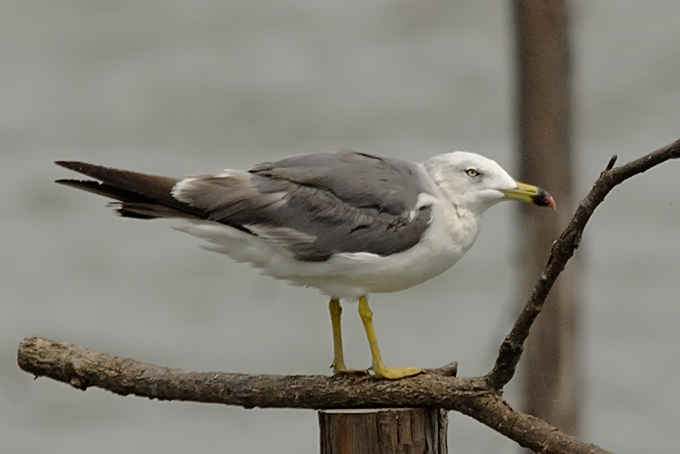
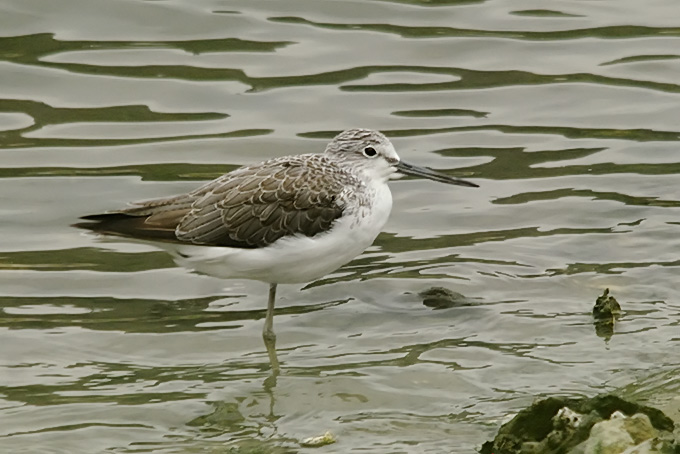
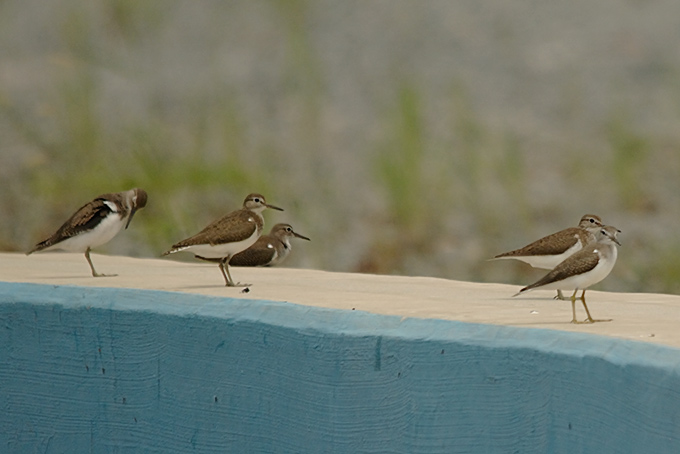
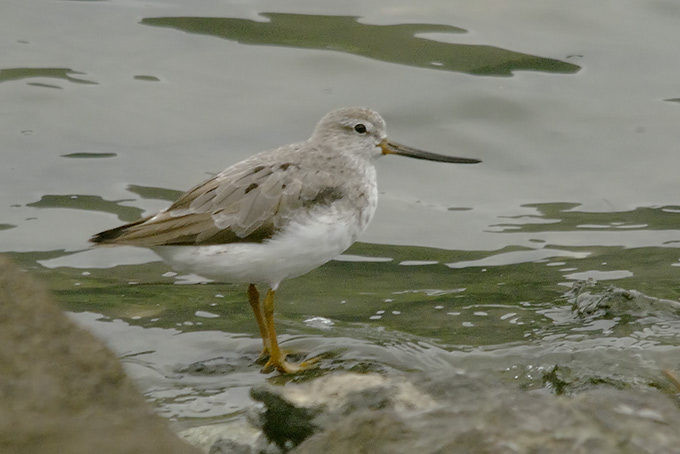
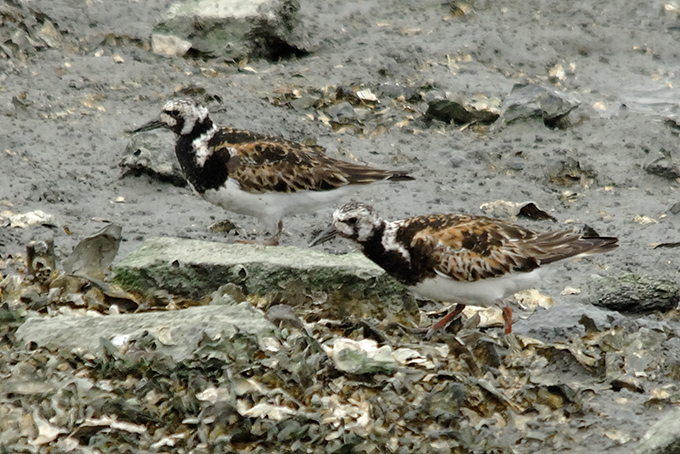
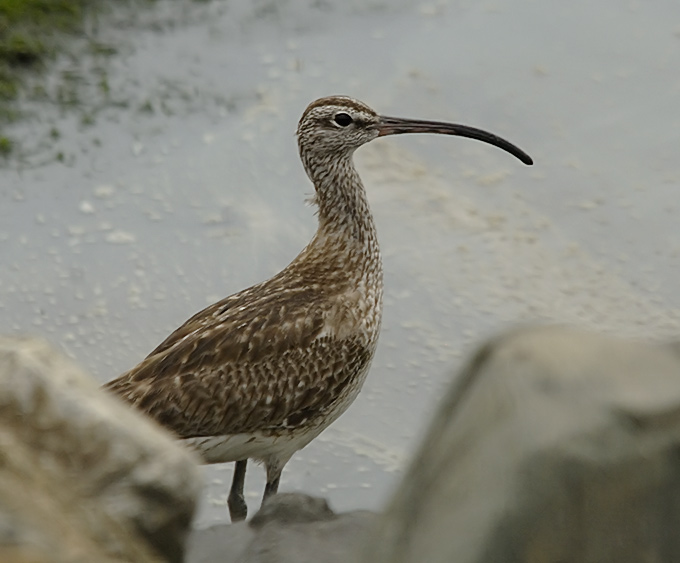
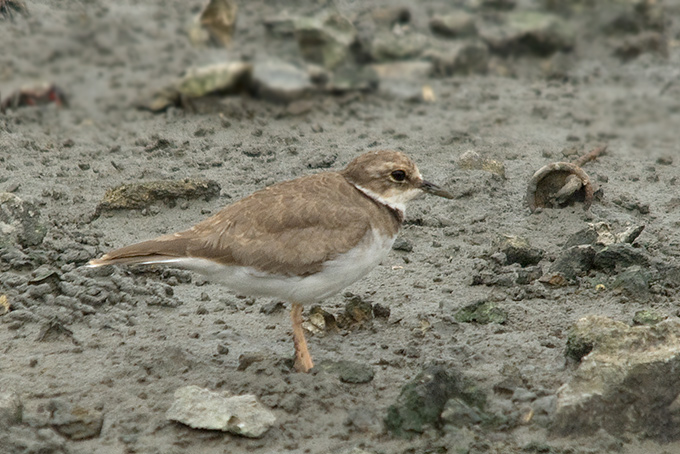
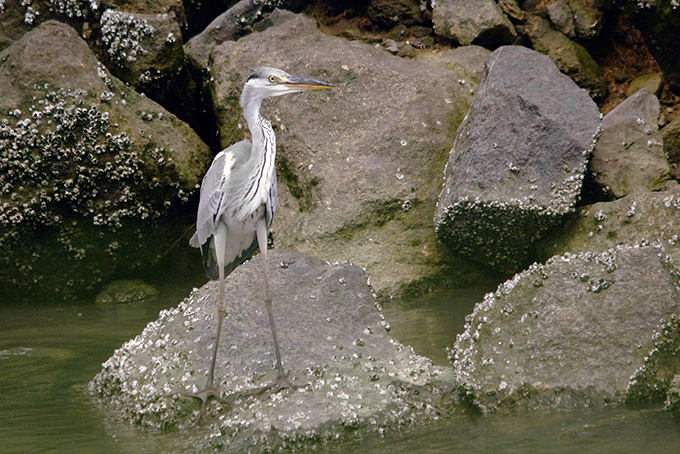
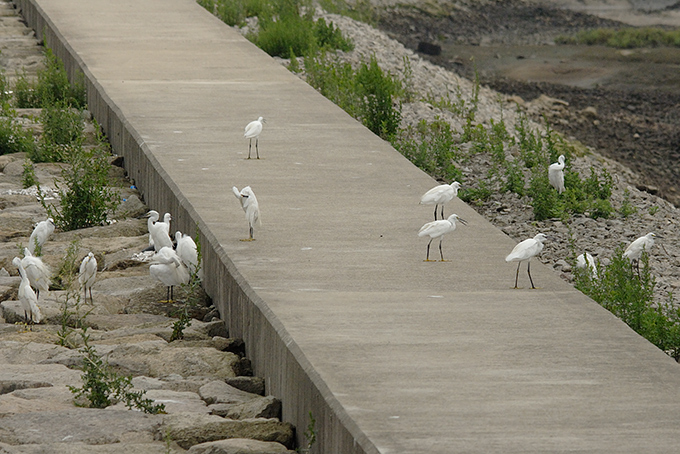
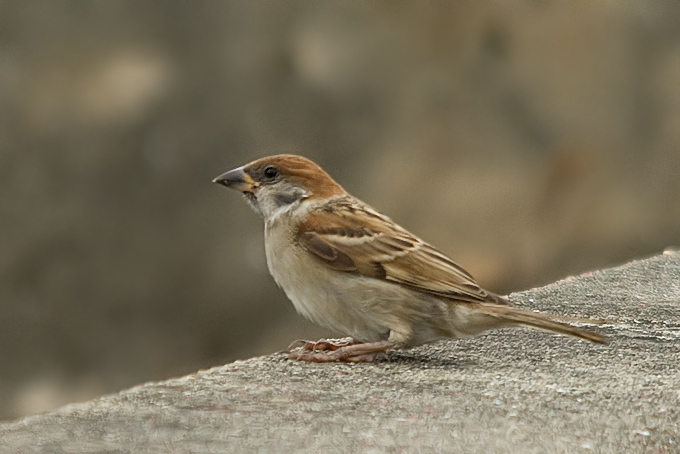
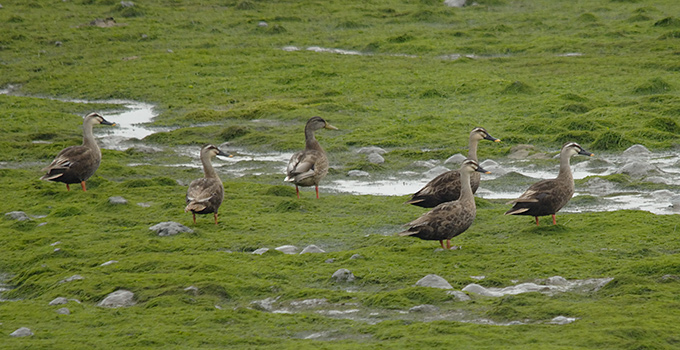
Sacheon, Gyeongsangnamdo, August 10
A visit to a Common Kingfisher pond near Sacheon between downpours proved to be a good idea. The incumbent was in fine diving form and also posed well quite near to my subtly-camouflaged hulk. Suddenly there was a loud squawk and I looked up to the top of the highest willow to see a beautiful Black-capped Kingfisher who had briefly alighted before being ushered away by several bulbuls, spoiling my chance of a photo. On the way home I saw a flight of Grey-Tailed Tattler and Terek Sandpiper over the estuary. Outside the shipyards a mix of at least 50 adult and immature Black-tailed Gulls had decided to sit out the high tide perched in twos and threes on a long line of lampposts.
